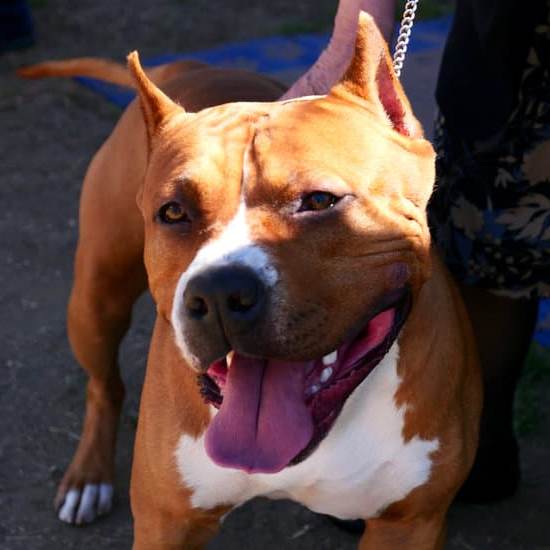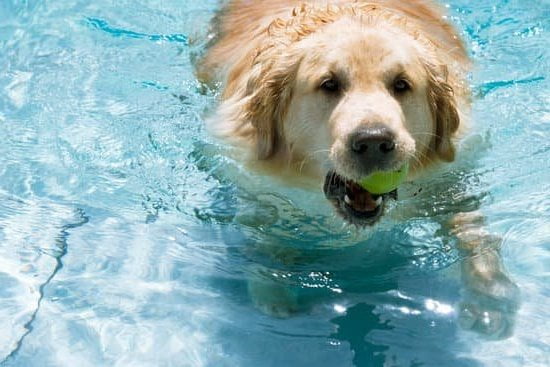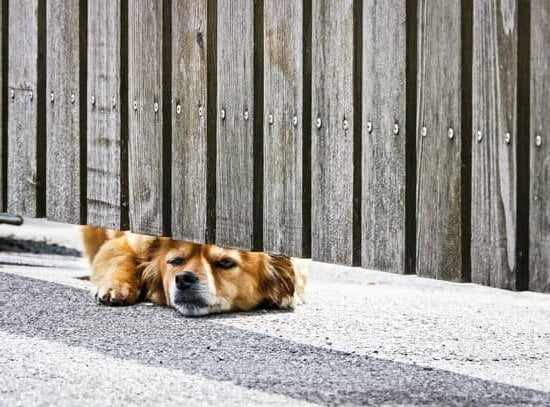Dog aggression can be a challenging behavior to address, especially when it is directed towards other dogs. Knowing how to train a dog who is dog aggressive requires a deep understanding of the reasons behind this behavior. In this article, we will explore the different factors that contribute to dog aggression towards other dogs and provide effective training techniques to help address this issue.
Understanding the root causes of dog aggression is crucial in developing a successful training plan. Whether it stems from fear, resource guarding, territorial behavior, or lack of socialization, identifying the specific trigger for a dog’s aggression is essential. By pinpointing the underlying cause, pet owners can tailor their training approach to effectively address and modify their dog’s aggressive behavior.
Recognizing the signs of dog aggression is another important aspect of training a dog with this issue. From body language cues like growling, raised hackles, and stiff posture to actual aggressive behaviors such as lunging or biting, being able to identify these signals can help prevent potential conflicts with other dogs.
Seeking guidance from a certified dog trainer or behaviorist can provide invaluable insights and support in creating a customized training program that suits both the dog’s needs and the owner’s goals.
Signs of Dog Aggression
Dog aggression can be a challenging issue for pet owners to handle, but recognizing the signs of aggression is crucial in addressing this behavior. One of the common indicators of dog aggression is hostile body language, such as a stiff posture, raised hackles, and a fixed stare.
Growling, snarling, barking excessively, and snapping are also clear signals that a dog is feeling threatened or aggressive towards another dog. It’s essential for dog owners to be able to identify these signs early on to prevent any potential aggressive incidents.
Physical Clues
In addition to body language, there are physical clues that can indicate a dog’s aggressive tendencies. These may include a tense jaw, ears pulled back, and a lowered head position. Some dogs may also exhibit warning signs like lip licking or yawning when feeling anxious or stressed in a social situation with other dogs.
Behavioral Red Flags
Certain behaviors can also serve as red flags for dog aggression. For instance, resource guarding, where a dog becomes possessive over food or toys and reacts aggressively when approached by another dog, is a common behavioral indication of aggression.
Dogs who have not been properly socialized or have had negative experiences with other dogs in the past may display fear-based aggression, leading them to lash out defensively. Understanding these behavioral cues is essential in addressing the root cause of the aggression and implementing appropriate training techniques.
Identifying the signs of dog aggression is the first step in effectively training a dog who struggles with this behavior. By observing your dog’s body language and behaviors closely, you can better understand their triggers and work towards modifying their responses through positive reinforcement training and desensitization techniques. Seeking guidance from a professional trainer or behaviorist can also provide valuable insight on how to train a dog who is dog aggressive successfully.
Consult a Professional
When dealing with a dog who displays aggression towards other dogs, it is imperative to seek the guidance of a certified dog trainer or behaviorist. These professionals have the expertise and experience to assess the situation objectively and create a personalized training plan that addresses the root cause of the aggression. Consulting a professional is crucial in ensuring the safety of both your dog and others around them.
Why Professional Help Is Necessary
A certified dog trainer or behaviorist can conduct a thorough evaluation of your dog’s behavior to determine the underlying reasons for their aggression towards other dogs. They will consider factors such as fear, territoriality, past experiences, or lack of socialization to tailor an effective training program. By seeking professional help, you are not only prioritizing your dog’s well-being but also increasing the chances of successful behavior modification.
Working Towards Positive Results
Professional trainers utilize positive reinforcement techniques to address aggressive behavior in dogs. This means rewarding desirable behaviors and ignoring or redirecting unwanted actions without resorting to punishment. Through consistent training sessions and guidance from a certified expert, you can learn how to train a dog who is dog aggressive effectively while strengthening the bond between you and your canine companion.
Positive Reinforcement Training
One of the key aspects of positive reinforcement training for dog aggression is to identify what motivates your dog. Whether it’s treats, toys, or praise, knowing what rewards are most enticing for your furry friend will help reinforce the behaviors you want to see more of. When your dog displays non-aggressive behavior towards other dogs, immediately reward them with their favorite treat or toy to positively reinforce that behavior.
Consistency is crucial when implementing positive reinforcement training for a dog with aggression issues. It’s important to set clear boundaries and rules for your dog while also being consistent in rewarding good behavior. Remember that training takes time and patience, so celebrate small victories along the way. With dedication and consistency, you can make significant progress in helping your dog overcome their aggression towards other dogs.
To effectively apply positive reinforcement training on a dog who is dog aggressive, it is essential to understand the underlying reasons behind their behavior. Working with a professional trainer or behaviorist who specializes in aggression can provide valuable insights and guidance throughout the training process. By combining positive reinforcement techniques with expert advice, you can create a tailored training plan that addresses your dog’s specific needs and helps them become more confident and well-behaved around other dogs.
| Positive Reinforcement Training Tips | Benefits |
|---|---|
| Identify motivators for your dog (treats, toys, praise) | Encourages desired behaviors and strengthens bond |
| Stay consistent in setting boundaries and rewarding good behavior | Promotes progress and success in training |
| Seek guidance from professional trainer/behaviorist specialized in aggression | Gains insights into underlying reasons behind aggression |
Desensitization and Counterconditioning
Counterconditioning, on the other hand, involves changing the dog’s negative response to other dogs into a positive one. This is done by pairing the sight or presence of another dog with something the aggressive dog loves, such as treats or toys.
For example, every time the aggressive dog sees another dog from a distance without reacting aggressively, they receive a tasty treat. Over time, the association between seeing another dog and receiving a reward helps the aggressive dog view other dogs in a more positive light.
It’s important to remember that desensitization and counterconditioning require patience and consistency. Progress may be slow, and setbacks can happen along the way. It’s crucial to move at your dog’s pace and not push them too far too quickly. With dedication and proper implementation of these techniques, you can help your dog overcome their aggression towards other dogs and learn to have positive interactions instead.
| Desensitization and Counterconditioning Steps | Benefits |
|---|---|
| Gradually exposing the dog to other dogs at a safe distance | Helps the dog become comfortable in presence of other dogs |
| Pairing sight of another dog with rewards like treats or toys | Changes negative response towards other dogs into positive one |
Management Strategies
Dealing with a dog who displays aggression towards other dogs can be challenging, but there are several management strategies that can help prevent aggressive incidents. Here are some effective ways to ensure the safety of your dog and others around them:
- Supervision: Always keep a close eye on your dog when they are in situations where they may encounter other dogs. This allows you to intervene quickly if any signs of aggression start to show.
- Use a muzzle: If your dog has a history of aggression towards other dogs, using a muzzle can be a helpful safety measure. Muzzles should be introduced gradually and in a positive way so that your dog is comfortable wearing one.
- Avoid triggering situations: Identify what triggers your dog’s aggression and try to avoid those situations as much as possible. For example, if your dog becomes aggressive when meeting new dogs, consider walking them in areas where encounters with other dogs are less likely.
It is important to remember that these management strategies are temporary solutions while you work on training your dog to overcome their aggression issues. Proper training, along with these safety measures, can help create a safer environment for both your dog and others around them.
Remember, every dog is different, and what works for one may not work for another. Seeking guidance from a professional trainer or behaviorist who specializes in working with aggressive dogs can provide valuable insights on how to train a dog who is dog aggressive effectively. With patience, consistency, and the right approach, it is possible to help your aggressive dog become more tolerant and well-behaved around other dogs.
Socialization
One effective way to socialize a dog with aggression issues is through structured group obedience classes or supervised playdates with calm and non-confrontational dogs. These interactions provide opportunities for the dog to practice positive behaviors while under the guidance of a professional trainer or behaviorist. It is essential to start with one-on-one interactions before gradually increasing the number of dogs present, always monitoring the dog’s behavior closely.
When socializing a dog who is dog aggressive, it is important to prioritize safety for both the dog and others involved. Using muzzles, leashes, and other management tools can help prevent potential incidents during socialization sessions. Additionally, rewarding calm and non-aggressive behavior with treats and praise can reinforce positive interactions with other dogs. Consistency in training and patience are key components in successfully socializing a dog with aggression issues.
Overall, socialization plays a significant role in helping a dog overcome aggression towards other dogs. By providing controlled environments for positive interactions and reinforcing good behavior, pet owners can help their canine companions learn appropriate ways to interact with other dogs peacefully. With dedication, patience, and consistency in training, even a dog with aggression issues can learn how to coexist harmoniously with other animals.
Patience and Consistency
Training a dog who is dog aggressive can be a challenging but rewarding process. Understanding the root causes of dog aggression is essential in addressing and correcting this behavior. By recognizing the signs of aggression in dogs, such as body language and behaviors, owners can take proactive steps to manage and train their dog effectively.
Consulting a professional, such as a certified dog trainer or behaviorist, is crucial in developing a training plan tailored to the specific needs of the dog. Positive reinforcement training techniques have been proven to be effective in modifying behavior and creating positive associations with other dogs. Desensitization and counterconditioning methods can also help the dog overcome its fear or aggression towards other dogs.
Implementing management strategies to prevent aggressive incidents, along with gradual socialization in controlled environments, can aid in the rehabilitation process. It is important for owners to emphasize patience and consistency throughout the training journey. With dedication and proper guidance, it is possible to successfully train a dog who is dog aggressive and improve their overall well-being.
Frequently Asked Questions
How Do I Stop My Dog From Being Dog Aggressive?
To stop your dog from being dog aggressive, it’s crucial to identify the triggers causing the aggression. Consult with a professional dog trainer or behaviorist to create a behavior modification plan tailored to your dog’s specific needs.
How Do You Discipline an Aggressive Dog?
Disciplining an aggressive dog should focus on positive reinforcement rather than punishment. Avoid physical or harsh methods that may escalate the aggression. Consistency, patience, and clear communication are key when correcting unwanted behaviors.
How Do You Calm Down an Aggressive Dog?
Calming down an aggressive dog requires a calm and assertive approach. Remove the trigger causing the aggression and create a calming environment for your dog. Use techniques like deep breathing exercises, redirection, and desensitization to help them relax and feel more secure.

Welcome to the blog! I am a professional dog trainer and have been working with dogs for many years. In this blog, I will be discussing various topics related to dog training, including tips, tricks, and advice. I hope you find this information helpful and informative. Thanks for reading!





